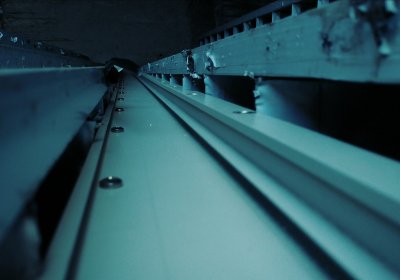What will the TVs of the future look like?

Technology has greatly influenced our lives and made many things much easier. In addition, over the last decades, technologies have emerged that have literally dominated their market. In the TV and monitor industry, LCD technology prevailed for a long time, which was systematically improved and developed with every next generation of devices. Nowadays, it seems that everything that could have been done with it has been done - it is difficult to find any point where it can be further improved. For this reason, more and more manufacturers are opting for something completely new: OLED.
Many LCD displays have already reached such a high level that it is difficult to identify anything that can be further improved or improved. Recently Samsung launched a new line of SUHD products that impresses with its high image quality. The maximum brightness here reaches up to 1000 nits, and the 10-bit colour depth makes it difficult to expect an even better experience while watching an ordinary movie. At about the same time, LG, Samsung's most important competitor, launched TV sets based on OLED technology. It turns out that it is devoid of many disadvantages which, despite everything, should be taken into account in the case of LCD technology.
One of the most serious drawbacks of LCD TVs is the difficulty in rendering deep black. There are, of course, televisions available on the market that offer satisfactory results in this respect, but the results are still worse than in the case of other technologies. Unfortunately, many people spent a lot of money on such TV sets, and still couldn't enjoy the fully satisfactory depth of black. The reason for these problems is the structure of LCD TV sets. They have a separate layer for backlighting the image. The light responsible for displaying the image after leaving this layer is then passed through special colour filters; the colours that together form a homogeneous image are displayed on the screen. However, the black obtained in this way is not entirely deep, because the above mentioned color constantly highlights the image, which deprives this color of a lot of character. Of course, manufacturers specializing in LCD TVs try to solve this problem in many ways. One of the most popular methods is partial blanking of the backlighting layer, which is supposed to give black additional depth. We have to admit that it actually significantly improves the image quality, but the effects are not fully satisfactory for more demanding users anyway.

OLED technology is the perfect solution to this problem. The TV set made in it is based on a completely different structure. In this case, the pixels that make up the image are themselves illuminated, so there is no need for any additional layer to illuminate them. If you want to display black at a given point, the pixels are simply switched off, not dimmed - this way you can achieve a truly perfect, deep colour. This perfectly enhances the contrast between the dark and bright colours on the TV screen and thus also the overall picture quality - making viewing much more enjoyable. It would seem that OLED technology has virtually all the advantages and it is the future of TV sets. There are many signs of this, but we should remember that we will also find some weaker points in it. First of all, the televisions made in it are still relatively difficult to access, and what's more - so far for a really good model of this type you have to really pay a lot. Nevertheless, we can count on the fact that the situation will change in favour of the customer with the increasing use of this technology. Currently it is used mainly in small displays - for example in smartphones and tablets - where the cost of production is much lower, so it does not affect the price of the whole device so much. Currently, OLED TVs are several times more expensive than LCDs, but we can hope that within a few years they will become much easier to access for the average customer.



Komentarze (0)
Zostaw komentarz ⇾